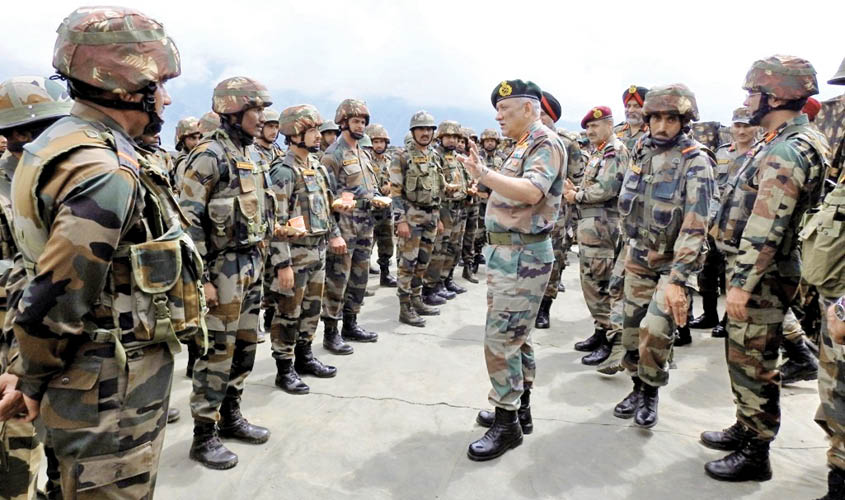The operation was codenamed Zafran, as the response of the Indian armed forces and zafran (saffron) had a common origin—Pulwama.
NEW DELHI: Pre-empting a war scenario with Pakistan, Indian Army had launched a top secret operation during Balakot airstrike in February 2019. The operation was code-named Op Zafran. This massive operation was launched in response to the Pulwama terror attack by the Pakistan-based terrorist organisation Jaish-e-Mohammed, in which 40 CRPF personnel were martyred. Pulwama district is the largest cultivator and producer of zafran—also known as saffron—in Kashmir. The operation was codenamed Zafran, as the response of the Indian armed forces and zafran had a common origin—Pulwama. “It was a controlled escalation and prepared-for-war operation”, a top source in the Army Headquarters confirmed to The Sunday Guardian on the condition of anonymity. Operation Zafran was launched immediately after the Pulwama terror attack and lasted for approximately five weeks. The codename Op Zafran was coined by the then Director General Military Operations (DGMO).
The first set of preparedness during Op Zafran was to activate the air defence systems to the highest alert level, in addition to moving the Artillery and Mechanised Infantry by the Indian Army. Not only just the Army but the Navy and the Air Force were also tasked by National Security Advisor Ajit Doval and three Services Chiefs to increase the posturing and be prepared for war, the same source confirmed. Once the orders were given by the three Services Chiefs, the execution of that was done by the DGMO (Director General Military Operations), DGNO (Director General Naval Operations) & DGAO (Director General Air Ops) from the Army, Navy and Air Force, respectively. The Indian Air Headquarters, which had codenamed its operation as Op Bandar, tasked the DGAO to disperse the main and important assets to move to the other suitable bases of the Air Force. The hinterland bases of the Indian Air Force were activated to launch at a short notice. DGNO deployed maximum assets for the sub-surface and above surface presence closer to the IMBL (International Maritime Boundary Line between India and Pakistan). It also launched maximum air sorties of Boeing P8i for surveillance in the Arabian Sea to monitor the movement of Pakistani naval assets. “Preparedness for such an intense situation from the Army side required a very fine and tactical balancing act between preparing for war, but not so early and not so much that we end up compromising the surprise element the Air Force needed to deliver the blow to the JeM terrorists’ training camps in Pakistan Occupied Kashmir on 26 February 2019. Hence, it was kept top secret and the information was passed on only on a need to know basis,” the Army Headquarters source informed this journalist.
The then Navy Chief and the Chairman, Chiefs of Staff Committee, Admiral Sunil Lanba said, “All three Services were fully coordinating and were in sync, during and after the Balakot strike. Indian Navy was fully ready and deployed to respond to any eventuality arising out of Balakot strike.”
Explaining the need for the Army to launch such a massive and top secret operation, former Indian Army Chief General Bikram Singh said, “While surprise was the key to the success of our aerial strikes at Balakot, it was imperative to concurrently keep our guard up along the LoC and even the International Border and remain ready to deal with any kind of reaction by Pakistan. Even though the lead Service was Air Force at Balakot, as a principle of war fighting, the other two Services always ensure operational readiness and balance in a synergised manner.”
Since Pakistan army could not react as much as Indian Army had prepared for, Operation Zafran was scaled down gradually in April.
In short, Operation Zafran galvanised India’s war-preparedness against Pakistan.

